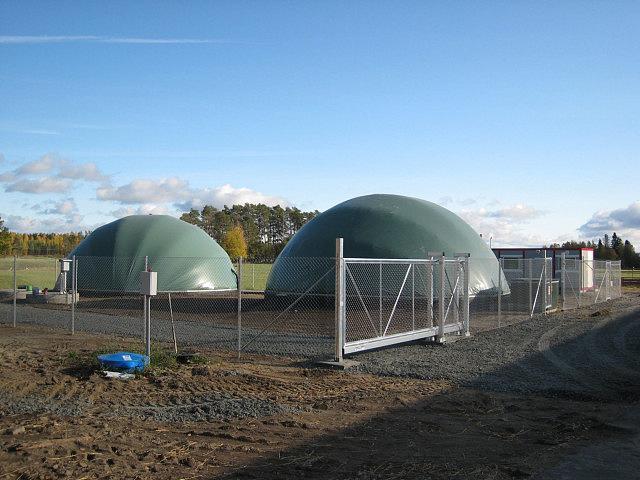
Support for farm biogas plant investments through knowledge
On this page
Almost the entire agricultural energy consumption (11 TWh), or alternatively, a quarter of the energy consumption of domestic road transport (42 TWh) in Finland, could be covered by domestic biogas production (total potential approximately 10 TWh). However, current annual biogas production is only around 1 TWh. Most of the unused potential lies in agricultural side streams and underutilised biomass. For a farm, however, a biogas plant is a big investment and requires changes in management practices.
Changes in the operational environment boost biogas production
In autumn 2021, there was a sharp rise in energy prices after the EU announced its ‘Fit for 55’ climate package, which aims to reduce greenhouse gas emissions by 55% by 2030, compared to 1990 levels. From the beginning of 2022, the rise in energy prices has further accelerated due to the war in Ukraine. In addition to the high prices, the availability of energy has become uncertain. Due to these challenges facing the provision and cost of energy, many farmers have begun considering producing biogas.
Biogas tool provides comprehensive baseline data
With the help of Luke’s Biogas tool, farmers can test how much energy and nutrients could be produced from the biomass available on the farm, and whether a biogas plant would be an economically viable investment for the farm. Meanwhile, the biogas process is becoming more familiar. The updated Biogas tool was released in March 2021 and offers the user three different technological solutions, more than thirty alternative feed materials, multiple ways for utilising gas energy content, and a broad selection of baseline values. More than 4,000 users have used the Biogas tool during its first year of operation.
Local support for biogas production is important
The economic, social and political barriers faced by biogas producers were identified in the FarmGas project through interviews. Weak agricultural profitability and rising prices for production inputs are hampering new investments. However, municipalities could help to reduce the investment risk by guaranteeing stable demand for biogas in public transport, for example. Another identified challenge was the short time frame and unpredictability of political decisions regarding support for biogas production and use. Despite challenges, the profitability of biogas production could be improved with new operating models combining decentralised and centralised production, as well as the use of biogas as a traffic fuel, especially for heavy transport, but also passenger cars.
Municipalities have a significant role in the development of the local biogas sector. Municipalities should actively bring together actors interested in biogas and be involved in the planning and implementation of collaboration,” Research Scientist Kalle Aro.
Environmental benefits in addition to energy self sufficiency
On-site energy production helps farms to anticipate energy costs and strengthen the security of their energy supply, while producing environmental benefits. Greenhouse gas emissions during manure storage are reduced when manure is directed to a biogas reactor and methane is recovered in a closed system.
With the help of the biogas process, it is also possible to increase the efficiency of nutrient recycling. During the process, the organic nitrogen in the raw material is partially converted to ammonium nitrogen, which is more readily taken up by the cultivated plants, and thus the need for an additional mineral nitrogen fertiliser is reduced. In addition, from a societal perspective, strengthening domestic biogas production is a way of reducing dependence on energy and nitrogen fertilisers imported from Russia.


